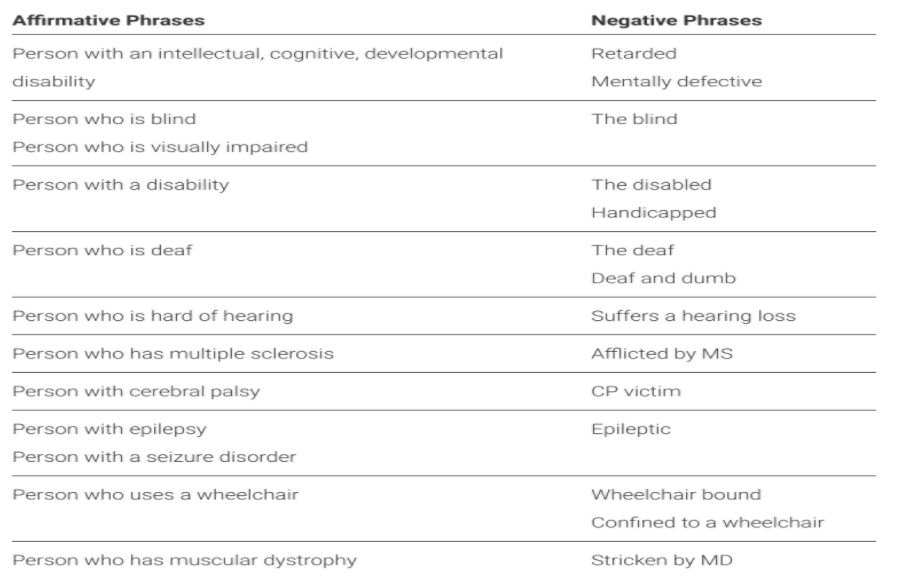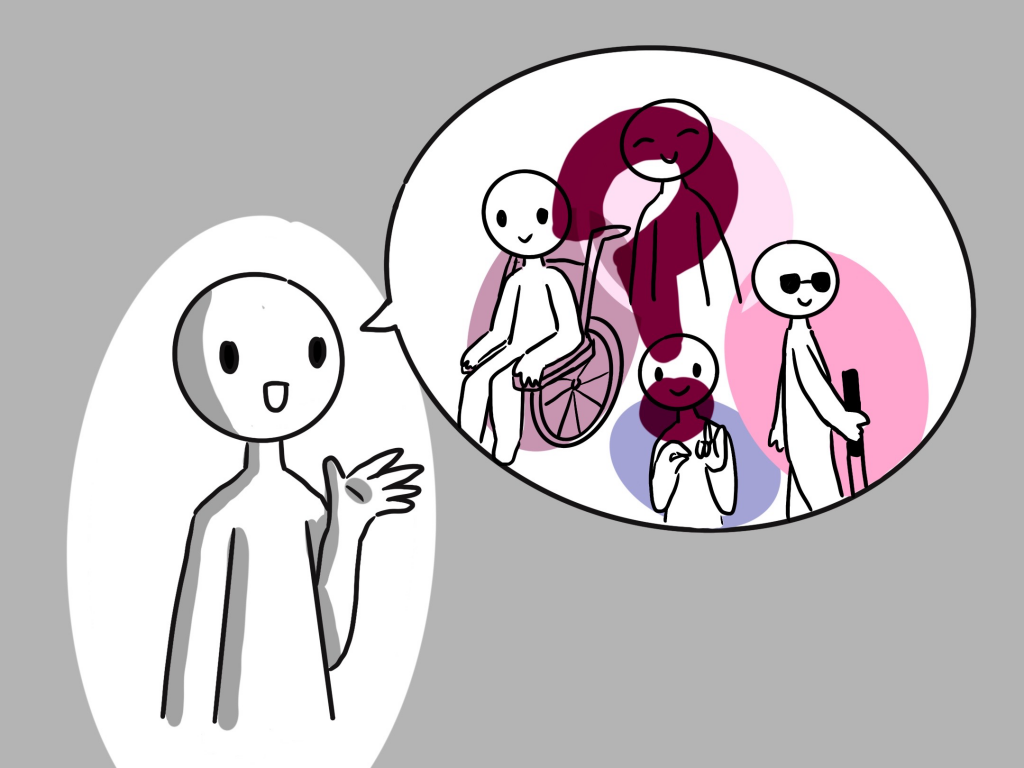How many times have you used the words “crazy” or “insane” to describe someone or a situation? Whether we realize it or not, saying “wow he took 12 AP classes, he’s INSANE” means we are guilty of using ableist language. Words like “lame,” “idiot,” “retarded,” “dumb,” and “maniac” are used as common filler words in everyday language, but little do we realize that we are blatantly disregarding and marginalizing people with disabilities. Able-bodied and able-mindedness are two of the few unrecognized privileges in society, and we take it for granted on many occasions. Privilege is invisible to those who have it. One way we can be inclusive of all people with disabilities is first and foremost, to refrain from using the word “handicapped.” Instead, refer to a person by the specific disability they have or use “person with a disability.” Generally, it is better to use people-first language over identity-first language, but typically in the deaf community and the autistic community, identity-first language is preferred.
For example:
Don’t use: “A depressed person” because it puts emphasis on the person’s disability rather than the actual person.
Instead, use: “A person with depression” because it emphasizes the person rather than their disability.
In other cases, it is better to use identity-first language, but it entirely depends on how the person wants to be addressed.
For example:
You can use: “An autistic person” or “a person with autism” because autism is a part of their identity.
Here is an informative chart that can help to familiarize ourselves with how to properly address those with various disabilities. It is critically important that able-bodied and able-minded people respect the rights and preferences of people who are disabled.

Tarun Kalyanaraman
Staff Writer
Graphic: Chloe Cho

